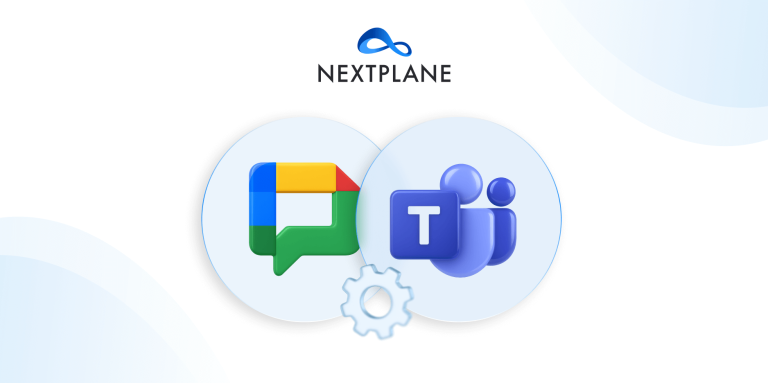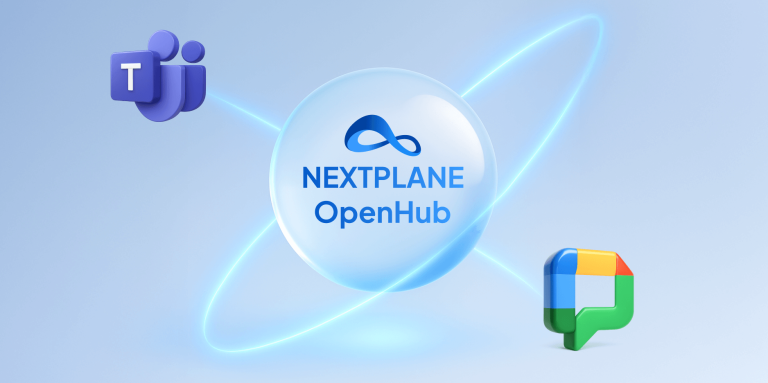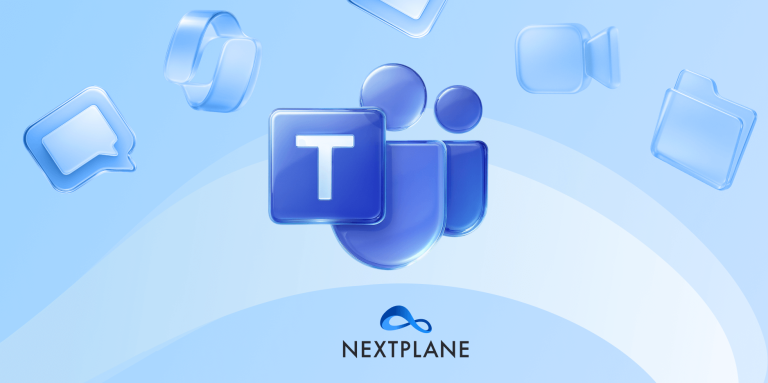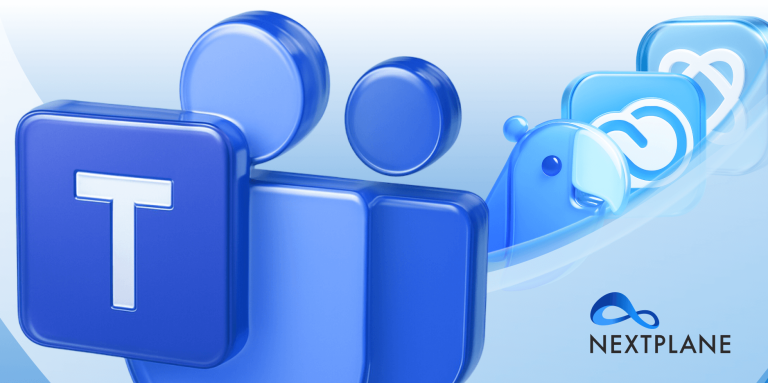Microsoft Teams vs Cisco Webex: Which Collaboration Platform is Best for Your Business?
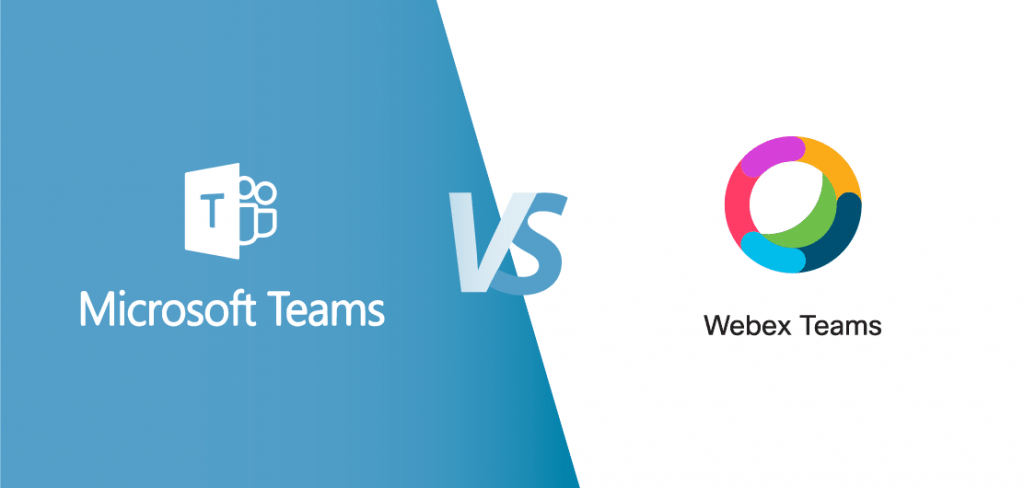
Table of contents

The COVID-19 pandemic has dramatically accelerated the shift to remote work and virtual collaboration. Even as offices reopen, it’s clear that distributed teams and hybrid work models are here to stay. Organizations need a robust, unified communications platform to enable seamless communication and productivity.
Two of the leading solutions in this space are Microsoft Teams and Cisco Webex. Both offer a comprehensive set of features for messaging, video meetings, calling, file sharing, and app integrations. But which one is the best fit for your company’s specific needs and IT environment? In this in-depth comparison, we’ll examine the key similarities and differences between Teams and Webex to help you make an informed decision.
User Interface and Ease of Use
Microsoft Teams, with its modern and intuitive interface, offers a reassuring familiarity to users of other Microsoft 365 apps. The clean and customizable layout, with teams and channels on the left, conversation threads in the center, and a versatile right sidebar for your calendar, files, apps, and more, underscores its adaptability. Features like message threading, announcements, channel moderation, and the ability to ‘like’ or save messages for later, ensure you can effortlessly stay on top of team communications.
Webex, with its channel-based messaging interface, offers a comprehensive solution. While it may appear slightly more cluttered compared to Teams, it provides a wealth of functionality at your fingertips. Features like spaces, teams, messaging, calling, whiteboarding, and apps, all accessible from a single window, emphasize the convenience it brings to your collaboration needs. Although the navigation and UI may not be as refined and user-friendly as Teams, it still offers a robust platform for your business.
Messaging and Collaboration Features
At their core, Teams and Webex excel as persistent group chat and collaboration tools. They offer users the ability to communicate via public channels organized by project, department, or topic, as well as private chats and group messages. The threaded conversations feature in both platforms is a testament to their ability to keep things organized, helping to streamline communication within your organization.
Robust messaging features like at-mentions, emojis, GIFs, polls, announcements, search, and the ability to edit/delete messages are available in both. Users can also share files directly in channels and chats.

Some advantages of Teams in the messaging arena include its handy built-in wiki for each channel, superior search across chats and channels, and tighter integration with Microsoft 365 apps for in-line document collaboration. Webex does offer unique options, though, like built-in real-time language translation.
Both support company-wide communication via org-wide teams/spaces. For fun, Teams has its Praise app for recognizing coworkers, while Webex lets you assign virtual “badges” to teammates.
Edge: Slight edge to Microsoft Teams for its wiki, search, and Microsoft 365 integration. But core messaging features are very comparable.
Video Meetings and Calling
With video now the default for meetings, both platforms provide a full-featured solution for video conferencing. Participants can join meetings from the Teams or Webex app, a web browser, or by dialing in from any phone. Common features include:
- HD video and audio
- Screen sharing and remote control
- Virtual backgrounds and background blur
- Meeting chat, Q&A, and polling
- Whiteboarding and annotation
- Meeting recording and transcription
- Webinar and live event hosting for large audiences
Teams has a slight edge in terms of meeting scalability, supporting interactive meetings with up to 1,000 participants and view-only live events up to 20,000. Webex has a 1,000-attendee limit for both meetings and events.

Webex allows users to join meetings as “guests” without needing to download an app or have an account, which Teams doesn’t support natively. Webex also has some nice touches, like automatic real-time transcription and gestures/reactions in meetings.
Both platforms support VoIP and PSTN calling with full PBX functionality – voicemail, call forwarding, auto attendants, etc. Teams Phone System requires using Microsoft as your telephony carrier (or direct routing to a 3rd party), while Webex Calling provides more flexibility to keep your current carrier. Both offer a cloud contact center solution as an add-on.
Edge: Toss-up – Teams has an edge for large broadcasts, while Webex has advantages like join-as-guest. But you’ll get a great video meeting experience either way.
App Integrations and Extensibility
To boost productivity, Teams and Webex both offer a wide selection of third-party app integrations. These allow you to bring external tools, bots, and content to your workspace. Popular apps for project management (Asana, Trello), customer support (Zendesk), development (GitHub, Jira), polling (Polly), recognition (Karma), and many more categories are available.
As a Microsoft product, Teams is natively integrated with Microsoft 365 apps like Word, Excel, PowerPoint, OneNote, SharePoint, Planner, and Power BI. Access to OneDrive cloud storage is built right into Teams, allowing seamless co-authoring of Office docs within the Teams environment. Microsoft 365 customers can access these tools at no extra cost.
Webex has partnered with Google to offer native integrations with Gmail, Drive, Calendar, and other Google Workspace apps. Of course, Microsoft tools can also be added to Webex, but the experience isn’t as seamless as Teams’.
Both platforms support custom development of apps, bots, tabs, and integrations using their respective APIs and SDKs. However, Teams benefits from a much larger community of Microsoft developers.
Edge: Microsoft Teams has the advantage in terms of Microsoft 365 integration, larger app ecosystem, and extensibility. However, both platforms cover key needs related to file sharing, calendaring, task management, etc.
Security and Compliance
Teams and Webex employ end-to-end encryption, multi-factor authentication, and tools for host-moderated meetings to keep your conversations private and secure.
For enterprise customers, Microsoft 365 Compliance Center enables a comprehensive set of information governance tools, including eDiscovery, auditing, data loss prevention, information barriers, retention policies, and legal hold for Teams data. These features help organizations in regulated industries or with strict data protection needs to maintain compliance.
Cisco also provides end-to-end encryption options for Webex data in transit and at rest, as well as eDiscovery, DLP, legal hold, and other compliance features via its Cloudlock and Stealthwatch security platforms. However, reviews have found that Webex falls a bit short of Teams when it comes to advanced information governance needs.
Edge: Both are enterprise-grade secure, but Teams compliance features are more mature and tightly integrated with Microsoft 365.
Deployment and IT Management
For Microsoft 365 customers, Teams is automatically provisioned for all users as part of the integrated office suite. IT can manage Teams settings, policies, and security options via the Microsoft 365 admin center. Active Directory integration enables single sign-on and synchronization of users/groups. No extra infrastructure is required since it’s a fully cloud-based service.
Webex can also be provisioned from the cloud, with the Control Hub providing a centralized management experience like the Microsoft 365 admin portal. However, some telephony and meeting room device integration may require on-premises Cisco infrastructure. Webex also offers hybrid and on-prem deployment models for organizations that require some local infrastructure.
Edge: Both deployments are straightforward, but Teams wins due to its turnkey setup and unified management as part of Microsoft 365. If you’re already a Microsoft shop, Teams is the logical choice.
Analytics and Administrative Tools
Webex
Access historical and real-time KPIs, reports, and interactive data visualizations about engagement, participants, and performance quality.

The Engagement tab displays graphs of each channel’s usage over time, comparisons of channel usage rates, and total numbers and minutes of all meeting types.
The Participants tab shows the number of participants in each meeting, meeting lengths, each participant’s role, apps used, and more.
Microsoft Teams
In addition to managing channel and participant settings, access the following real-time and historical reports, dashboards, and analytics:
- Usage reports: Active users, active channels, messages sent.
- User activity reports: Each user’s messages, number of meetings, calls participated, and last activity date.
- Call quality dashboards: Organization-wide call and meeting quality, with reliability reports and user survey ratings, charted over time in graphs.

Pricing and Packaging
Microsoft Teams has a compelling price point since it is included at no additional cost with Microsoft 365 Business Basic, Business Standard, E3, and E5 subscriptions. For companies already subscribing to Microsoft 365, Teams is essentially free. A standalone “freemium” version of Teams is also available at no cost for up to 300 users but lacks admin tools, scheduled meetings, phone/audio conferencing, and limited storage.
Webex also has a free tier that’s surprisingly full-featured, supporting up to 100 participants, 1-50-minute meetings (24 hours during the pandemic), 5GB of storage, and limited admin controls. Paid plans start at $13.50/user/month for Meet (meetings only) and $25/user/month for the full-featured Suite. Discounts are available for volume licensing.
Calling plans that enable PSTN connectivity are an extra charge for both – starting around $8/user/month but varying based on minute consumption. For Teams, you must use Microsoft 365 Business Voice or Phone System licenses. Webex Calling is priced similarly.
So, while Teams and Webex have similar stand-alone pricing, Teams is clearly the better deal for Microsoft 365 subscribers. Cisco does not have a directly comparable office productivity suite licensing model.
Edge: Pricing is similar, but the Teams/Microsoft 365 bundle offers much greater bang for the buck compared to Webex alone or Webex+Office 365. Freemium plans are generous on both.
Extending Collaboration with NextPlane OpenHub
While both Teams and Webex offer extensive collaboration capabilities within their respective platforms, many organizations face the challenge of enabling seamless communication with external partners, clients, or teams who may use different tools. This is where NextPlane OpenHub comes in.
OpenHub is a groundbreaking solution that enables cross-platform collaboration between Microsoft Teams and Webex users, as well as other popular platforms like Slack and Zoom. With OpenHub, teams can effortlessly connect and communicate with users on other collaboration platforms, breaking down silos and allowing for smooth interoperability.
By leveraging OpenHub, Teams users can collaborate with external stakeholders without the need to switch between multiple apps or manage separate accounts. OpenHub’s advanced features include:
- Universal Channels: Create channels that span multiple platforms, allowing users from different tools to participate in the same conversation seamlessly.
- Direct Messaging: Enable private 1:1 or group chats between users on different platforms, fostering secure and efficient communication.
- File Sharing: Share files and documents across platforms, ensuring everyone has access to the information they need, regardless of the tool they use.
- Presence Synchronization: View the real-time availability status of users across platforms, facilitating easier and more effective collaboration.
- Centralized Administration: Manage all external collaboration from a single interface, simplifying governance, security, and compliance.
By integrating OpenHub with Microsoft Teams, organizations can maximize the potential of their collaboration platform, fostering a more connected, efficient, and productive workforce. This is particularly valuable in today’s multi-platform collaboration landscape, where businesses need to work with a wide range of partners, clients, and stakeholders who may have different tool preferences.
With OpenHub, Teams users can seamlessly collaborate with Webex users and vice versa, ensuring no one is left out of the conversation. This integration breaks down barriers and enables organizations to make the most of their investment in collaboration technology, regardless of the platforms their external partners use.
| Feature | Cisco Webex | Microsoft Teams |
| Client | Mobile (Android & iOS) Web application Desktop app | Mobile (Android & iOS) Web application Desktop (Mac, Linux, and Windows) |
| Meeting format | Audio & Video | Audio & Video |
| File, screen, and app sharing | App sharing Desktop sharing Give/take control when sharing Share system audio Document co-authoring Virtual whiteboarding | App sharing Desktop sharing Share system audio Virtual whiteboarding |
| Video Conferencing | One-click video meeting Background blur Virtual backgrounds Virtual hand raising | One-click video meeting Background blur Virtual background replacement |
| Meeting Controls | Lobby (waiting room) Mute other participants or self Dial in or out from a phone Integrate with calendar | Lobby (waiting room) Mute other participants or self Dial in or out from a phone Integrate with calendar |
| Security, administration, and reporting | Encryption for all conversations Reporting and analytics tools Monitoring and alerting features Admin controls Device management portal | Encryption for all conversations Reporting and analytics tools Monitoring and alerting features Admin controls Device management portal |
| Customer support | Live chat Email support | Live chat Email support |
| Telephony | Cloud calling through Webex and UCM. Native endpoints and hardware | Microsoft calling plan Direct routing services Endpoint partnerships |
| External contacts | Can meet with Skype for Business users, Jabber, and other Webex users through NextPlane OpenHub. | Can meet with Skype for Business users and other Microsoft Teams users through NextPlane OpenHub. |
| Free version | Yes | Yes |
Conclusion
In the battle of Microsoft Teams vs Cisco Webex, both platforms offer robust collaboration capabilities that can help organizations boost productivity and enable remote work. While Teams has an edge in terms of user experience, Microsoft 365 integration, and cost-effectiveness, Webex remains a strong choice for organizations invested in Cisco infrastructure.
However, the real game-changer is OpenHub, which enables seamless cross-platform collaboration between Teams, Webex, and other popular tools. By leveraging OpenHub, organizations can break down silos, facilitate external collaboration, and maximize the value of their collaboration investments.
Ultimately, the choice between Teams and Webex depends on your organization’s specific needs and existing IT ecosystem. But with NextPlane OpenHub, you can ensure that whichever platform you choose, your teams can collaborate effectively with partners and clients on any platform. In today’s interconnected business landscape, that kind of flexibility and interoperability is essential for success.
